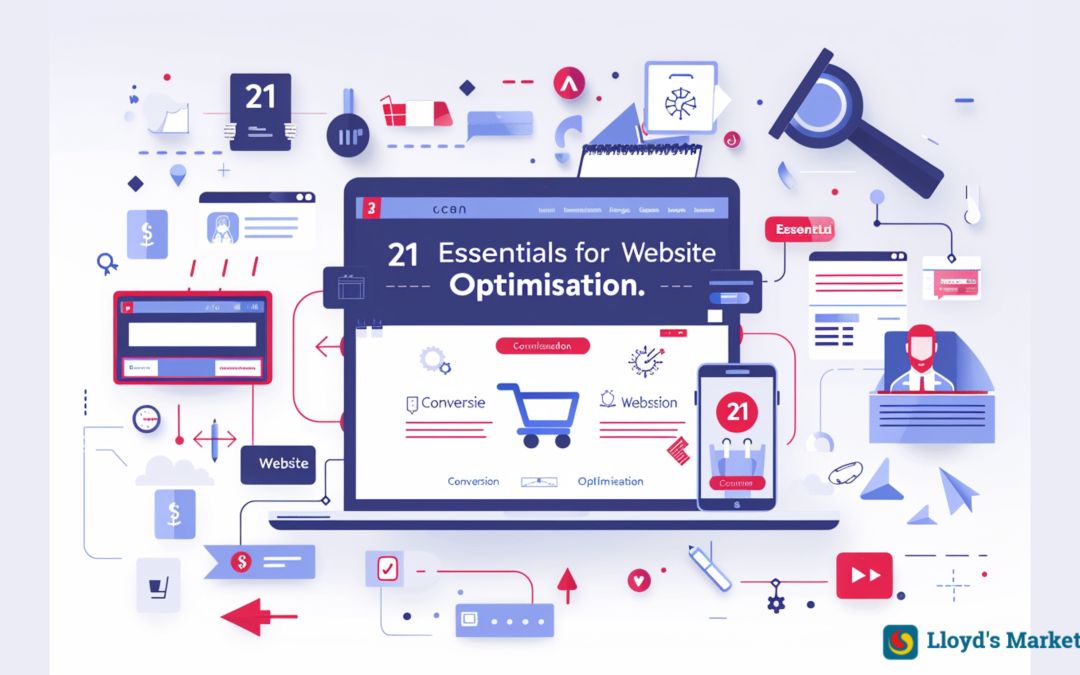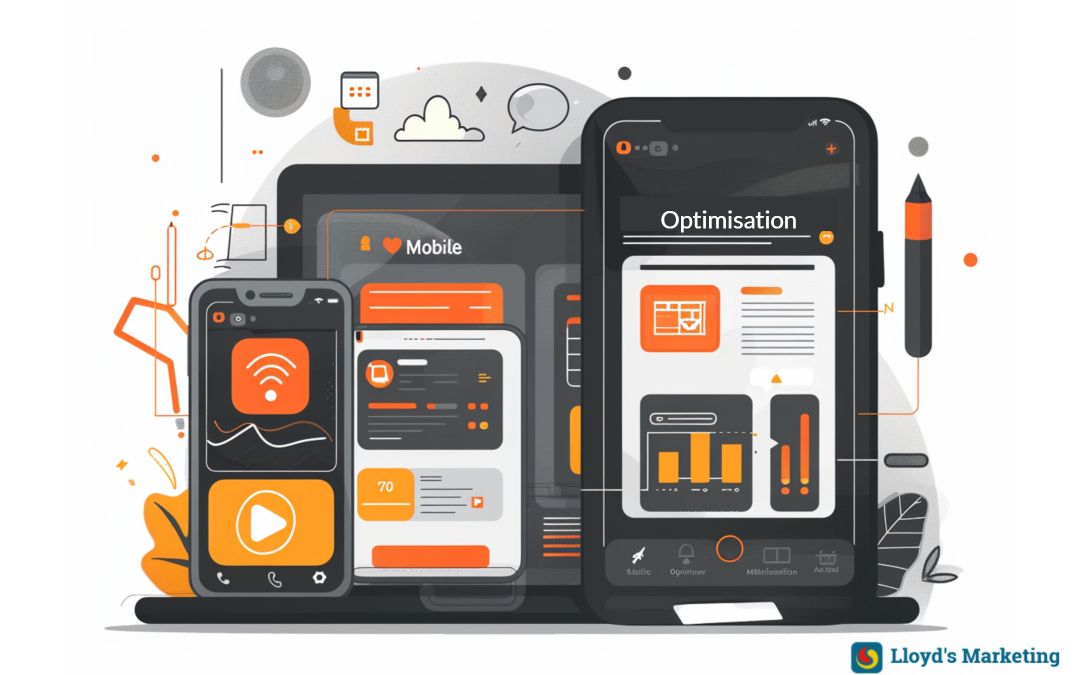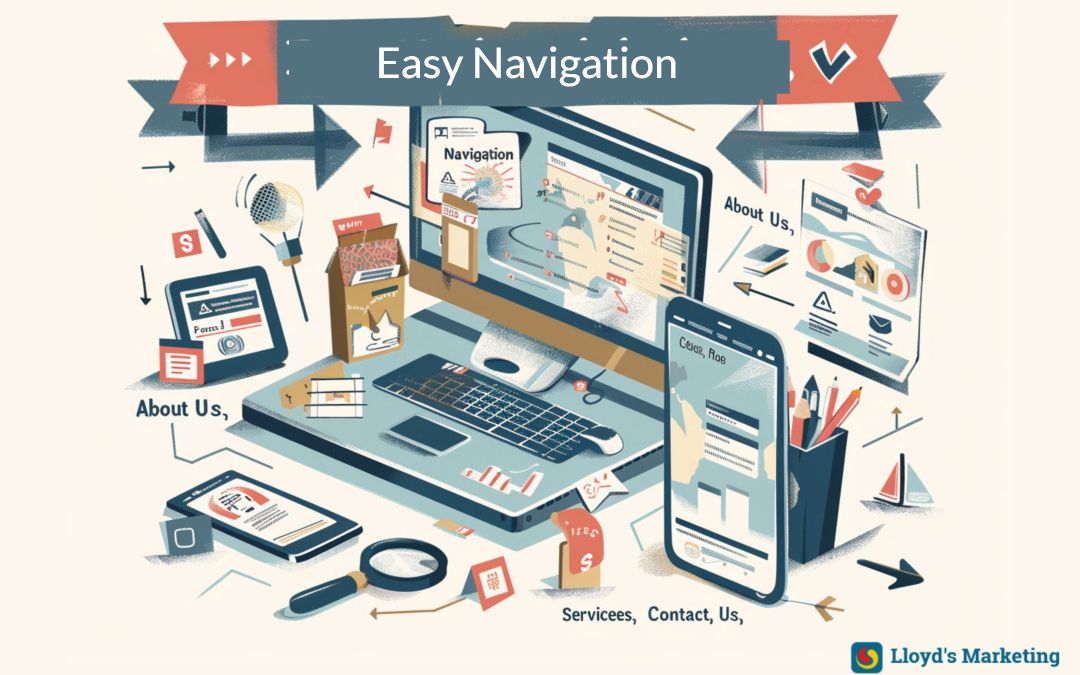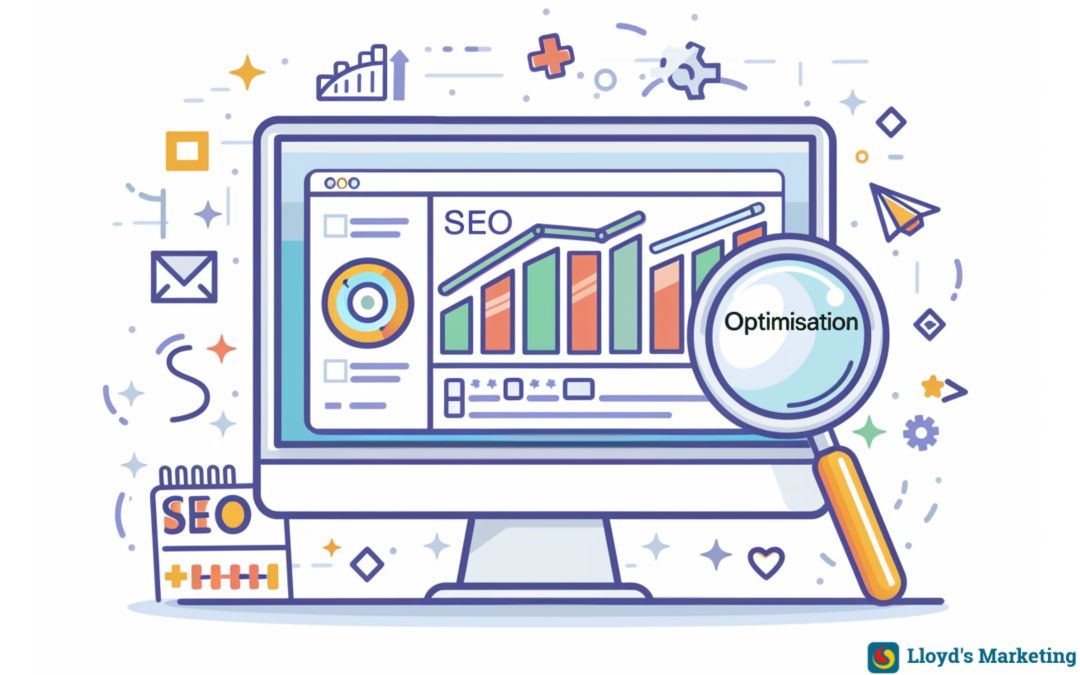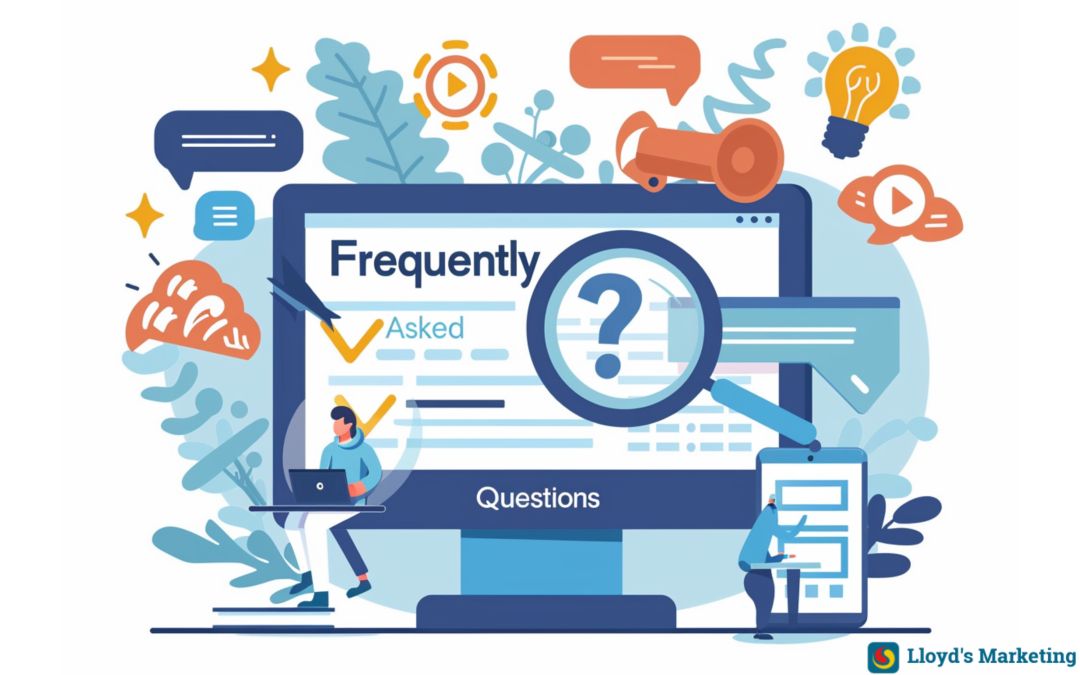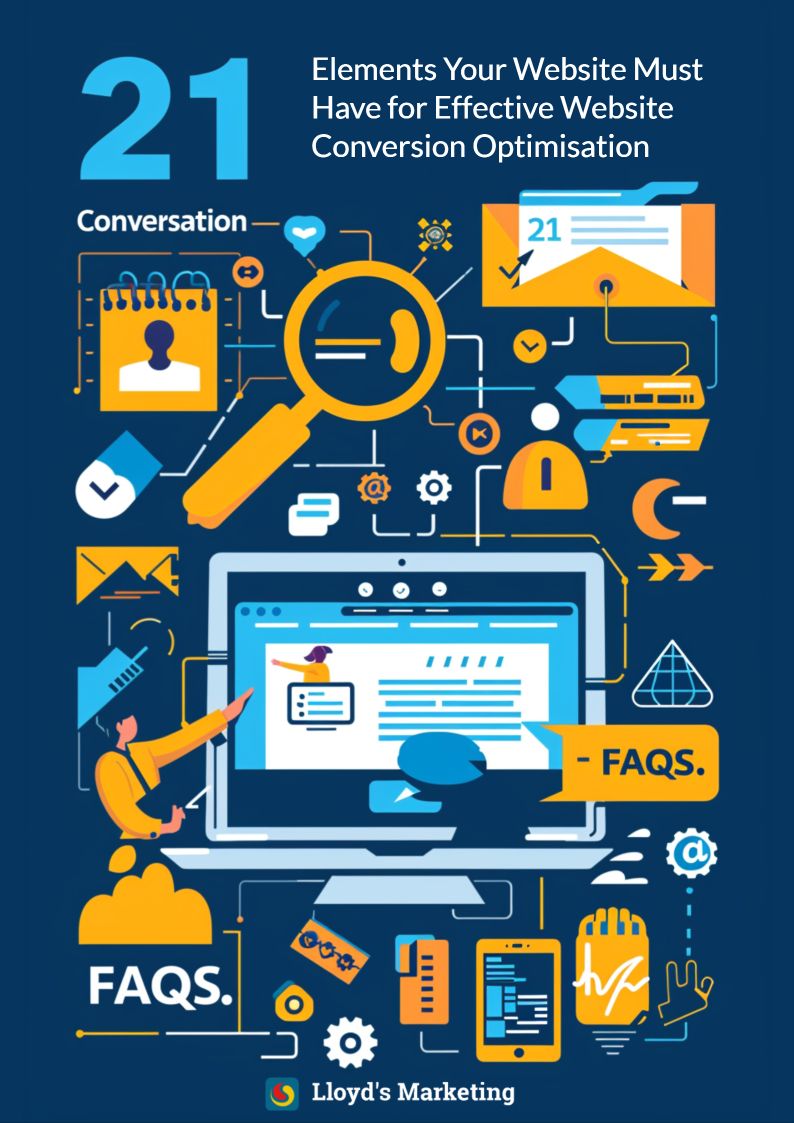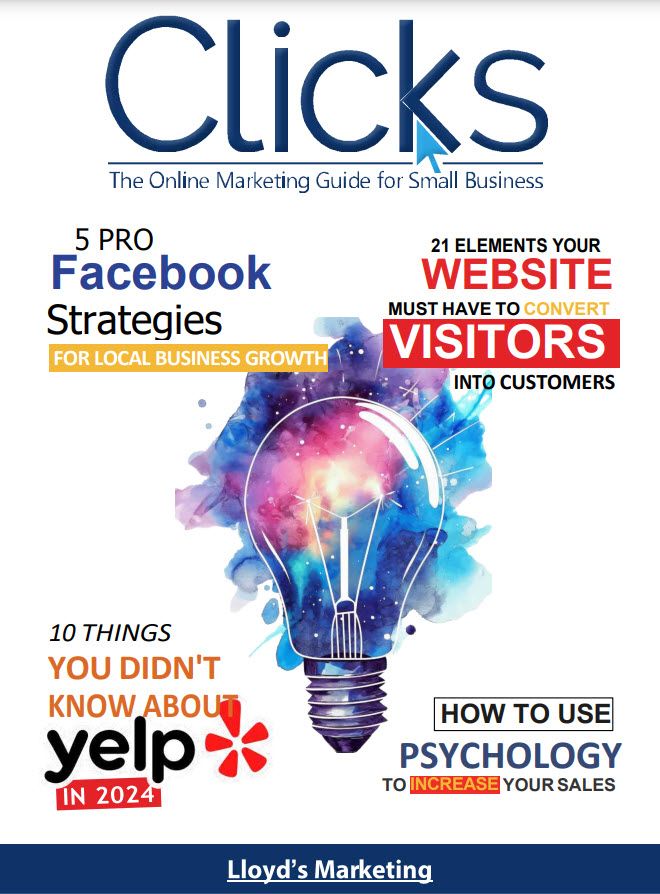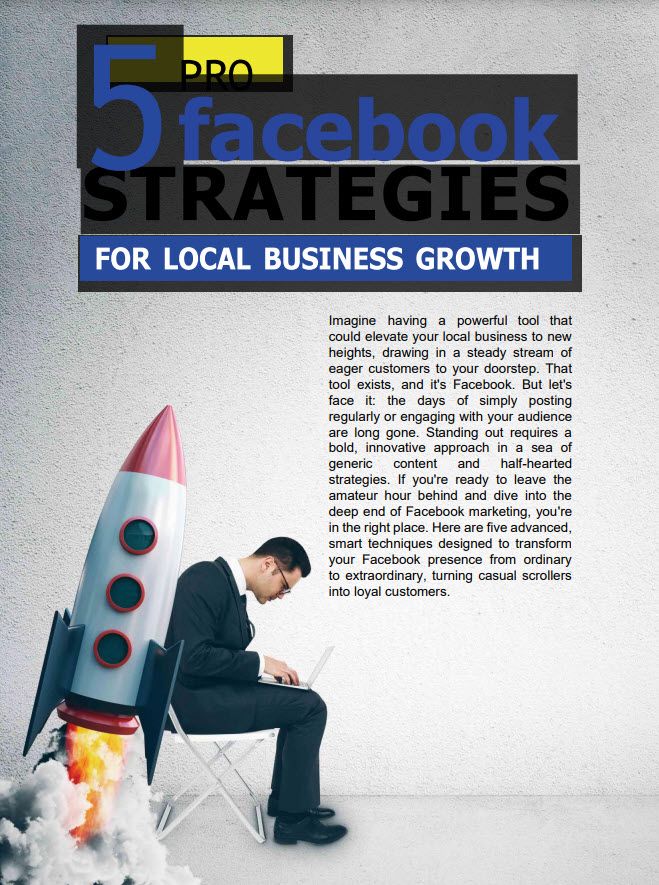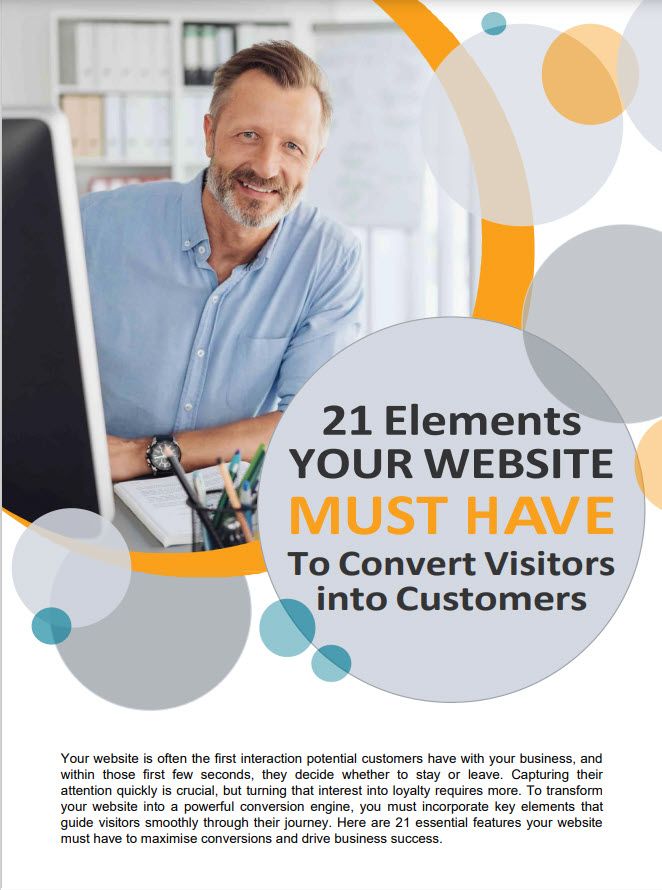Your website is often the first interaction potential customers have with your business, and within those first few seconds, they decide whether to stay or leave. Quickly capturing their attention is crucial, but turning that interest into loyalty requires more.
To transform your website into a powerful conversion engine, you must incorporate key elements that guide visitors smoothly through their journey. Here are 21 essential features your website must have to maximise conversions and drive business success through effective website conversion optimisation.
Table of Contents
1. Clear Value Proposition
Your value proposition should immediately convey what your business offers and why it’s the best choice. This statement should be prominently displayed on your homepage, letting visitors know what they can expect from your business. By clearly articulating your unique benefits, you can quickly capture the interest of potential customers. A strong value proposition differentiates you from competitors and sets the stage for a compelling user experience.
Pro Tips:
- Place your value proposition above the fold.
- Use concise and compelling language.
- Highlight the unique benefits of your product or service.
2. User-Friendly Design
A clean, intuitive design is essential. Ensure your website is easy to navigate with a logical layout, clear headings, and a consistent colour scheme. A user-friendly design helps keep visitors engaged and makes finding the information they need easier. Good design attracts and retains visitors, enhancing their overall experience and increasing the likelihood of conversion.
Tips for Implementation:
- Use a clear, hierarchical structure for your content.
- Ensure your design is visually appealing but not overwhelming.
- Test your design with real users to gather feedback.
3. Fast Load Times
Page speed is critical. A slow-loading website can frustrate visitors and lead to higher bounce rates. Use tools like Google PageSpeed Insights to identify and fix issues that could slow down your site. Faster load times improve user satisfaction and search engine rankings. Remember, a faster site can lead to a lower bounce rate and higher conversion rates, making speed a critical factor in your website’s success.
Tips for Implementation:
- Minimise HTTP requests by combining files.
- Use asynchronous loading for CSS and JavaScript.
- Enable browser caching and compression.
4. Strong Calls to Action (CTAs)
Effective CTAs guide visitors towards taking specific actions, such as signing up for a newsletter or purchasing. Use action-oriented language and place CTAs strategically throughout your website. Well-placed CTAs can significantly increase your conversion rates. Clear and compelling CTAs act as signposts, directing your visitors toward the actions you want them to make and facilitating a smoother user journey.
Tips for Implementation:
- Use contrasting colours to make CTAs stand out.
- Keep the CTA text clear and compelling.
- Place CTAs in high-visibility areas, such as the header, footer, and within content.
5. Mobile Optimisation
With most web traffic now coming from mobile devices, it is crucial to optimise your website for mobile use fully. Please ensure it loads quickly, displays correctly, and is easy to navigate on all devices. Mobile optimisation helps you reach a broader audience and improves user experience. In a mobile-first world, a seamless mobile experience is no longer optional but necessary.
Tips for Implementation:
- Use responsive design techniques to adapt to different screen sizes.
- Optimise images and other media for faster loading times.
- Test your website on multiple devices and browsers.
6. High-Quality Content
Content is king when it comes to conversions. Provide valuable, relevant information that addresses your visitors’ needs and pain points. High-quality content builds trust and positions your business as an authority in your field, encouraging visitors to take action. Engaging content attracts visitors and keeps them returning for more, fostering long-term relationships.
Tips for Implementation:
- Use a mix of content types, such as blog posts, videos, and infographics.
- Regularly update your content to keep it fresh and relevant.
- Focus on solving problems and providing value to your audience.
7. Engaging Visuals
Use high-quality images and videos to capture attention and illustrate your points. Visual content can make your website more appealing and help convey your message more effectively. Engaging visuals can also improve your site’s overall aesthetic and user experience. Humans are visual creatures, and compelling visuals can significantly enhance your storytelling and brand communication.
Tips for Implementation:
- Use professional photography or high-quality stock images.
- Create short, engaging videos to explain complex topics.
- Use visuals to break up text and make your content more digestible.
8. Trust Signals
Build trust with visitors by displaying trust signals such as customer testimonials, reviews, certifications, and security badges. These elements reassure visitors that your business is credible and trustworthy, which is crucial for converting them into customers. Trust signals can alleviate potential concerns and encourage users to take the next step in their journey confidently.
Tips for Implementation:
- Place trust signals near CTAs and on key landing pages.
- Use testimonials and reviews from real customers.
- Display security badges prominently on pages where users enter personal information.
9. Social Proof
Highlight social proof by showcasing user-generated content, case studies, and social media mentions. Seeing that others have had positive experiences with your business can encourage new visitors to convert. Social proof can significantly influence purchasing decisions, providing the validation potential customers need to feel confident in their choices.
Tips for Implementation:
- Feature user reviews and testimonials on product pages.
- Share case studies that demonstrate successful outcomes.
- Display social media feeds or user-generated content.
10. Easy Navigation
Ensure visitors can easily find what they’re looking for with a well-organised navigation menu. Include clear categories and a search bar to help users locate information quickly. Easy navigation reduces frustration and keeps visitors on your site longer. A smooth and intuitive navigation experience is critical to retaining visitors and guiding them through your content seamlessly.
Tips for Implementation:
- Use a simple, hierarchical menu structure.
- Include a search bar in a prominent location.
- Test your navigation with users to ensure it’s intuitive.
11. Contact Information
Provide clear contact information to make it easy for visitors to get in touch. Include a phone number, email address, and physical address, and consider adding a contact form for convenience. Easy access to contact details can increase trust and encourage communication. Being readily available to visitors can enhance customer satisfaction and foster a stronger connection.
Tips for Implementation:
- Place contact information in the header or footer.
- Use a dedicated “Contact Us” page with a form.
- Ensure your contact details are easy to find on all pages.
12. Compelling Headlines
I think your headlines should grab attention and encourage visitors to read more. You can use clear, benefit-driven language to communicate the value of your content and keep visitors engaged. Compelling headlines can dramatically improve click-through rates. Headlines are often the first thing visitors see, so making them engaging and informative is crucial to capturing interest.
Tips for Implementation:
- Use numbers and power words in your headlines.
- Keep headlines concise and to the point.
- Test different headline variations to see what works best.
13. Clear Pricing Information
Be transparent about your pricing. Display clear pricing information on your product or service pages to help visitors make informed decisions. Transparent pricing builds trust and reduces hesitation, making it easier to convert visitors. Transparent pricing can also help manage customer expectations and reduce enquiries about costs.
Tips for Implementation:
- Use a pricing table to compare different options.
- Highlight the benefits and features of each pricing tier.
- Include a call to action near the pricing information.
14. Simple Checkout Process
If you sell products online, ensure your checkout process is as simple and streamlined as possible. Minimise the number of steps and required fields to reduce cart abandonment rates. A smooth checkout process can significantly boost sales. Simplifying the checkout experience can help reduce friction and make purchasing more enjoyable for customers.
Tips for Implementation:
- Offer guest checkout options.
- Use progress indicators to show checkout steps.
- Simplify form fields and only ask for essential information.
15. Live Chat Support
You can offer live chat support to help visitors in real time. This feature can help answer questions, resolve issues, and provide personalised assistance, increasing the likelihood of conversions. Live chat can significantly enhance the customer experience. It helps prevent potential customers from leaving your site frustrated and can turn enquiries into sales.
Tips for Implementation:
- Use a reliable live chat platform.
- Ensure chat agents are knowledgeable and responsive.
- Promote live chat availability during business hours.
16. SEO Optimisation
Optimise your website for search engines to attract more organic traffic. Use relevant keywords, optimise meta tags, and ensure your site structure is search-engine-friendly. SEO optimisation helps improve your visibility and attract more potential customers. Higher search rankings can lead to more traffic and, consequently, more conversions.
Tips for Implementation:
- Conduct keyword research to identify relevant terms.
- Optimise title tags, meta descriptions, and headers.
- Use internal linking to improve site navigation and SEO.
17. Regular Updates
Keep your website content fresh and up-to-date. Please update your blog regularly, add new case studies, and refresh your product or service information to keep visitors returning. Just to let you know, frequent updates indicate to visitors that your business is active and engaged. Consistently updating content can also help improve SEO and keep your audience engaged.
Tips for Implementation:
- Set a schedule for content updates.
- Review and update old content to ensure accuracy.
- Add new case studies or testimonials regularly.
18. Analytics and Tracking
Use analytics tools to track visitor behaviour and gather insights into what works and what doesn’t. This data can help you make informed decisions and continuously improve your website. Analytics and tracking are crucial for measuring the effectiveness of your efforts. Understanding visitor behaviour can help you identify areas for improvement and optimise your site for better performance.
Tips for Implementation:
- Set up Google Analytics and track key metrics.
- Use heatmaps to understand user interactions.
- Analyse data regularly and adjust your strategy accordingly.
19. A/B Testing
Conduct A/B testing to experiment with different versions of your web pages. Test various headlines, CTAs, layouts, and designs to determine what resonates best with your audience and drives conversions. A/B testing helps you optimise for the best results. Regular testing and iterating can lead to continuous improvement and higher conversion rates.
Tips for Implementation:
- Use A/B testing tools like Google Optimize.
- Test one element at a time for precise results.
- Analyse test data and implement the winning variation.
20. Email Capture Forms
Encourage visitors to subscribe to your email list by offering valuable incentives such as discounts, ebooks, or exclusive content or merchandise. Place email capture forms strategically throughout your website. Building an email list allows you to nurture leads and drive conversions. A robust email list can become valuable for future marketing efforts and customer retention.
Tips for Implementation:
- Use pop-ups or slide-ins to capture emails.
- Offer a compelling lead magnet.
- Place forms in high-visibility areas like the header or footer.
21. Strong Branding
Ensure that your website reflects your brand’s identity. Use consistent colours, fonts, and imagery to create a cohesive look and feel. Strong branding helps build recognition and trust with your audience, making your business memorable. A well-branded website can leave a lasting impression and differentiate you from competitors.
Tips for Implementation:
- Develop a brand style guide and stick to it.
- Use high-quality images and graphics that reflect your brand.
- Ensure all content aligns with your brand voice and values.
In conclusion, a well-designed, user-friendly site that provides valuable content, builds trust and encourages action is vital to driving business success. Don’t let your website be just another online presence—make it a dynamic engine for growth and engagement through effective website conversion optimisation. Start by assessing your current site, identifying areas for improvement, and gradually integrating these essential features.
Remember, each step you take towards enhancing your website brings you closer to higher conversion rates and more significant business success. Take action today, and watch your business flourish as your website becomes a customer magnet. Your next wave of loyal customers is just a click away!
Frequently Asked Questions About Website Conversion Optimisation
1. What is website conversion optimisation? 📈
Website conversion optimisation is improving a website to increase the percentage of visitors who complete desired actions, such as purchasing, signing up for a newsletter, or filling out a contact form. This involves enhancing various website elements to create a better user experience and guide visitors towards conversion.
2. Why is a clear value proposition important? 🏆
A clear value proposition is crucial because it immediately communicates to visitors what your business offers and why they should choose you over competitors. It sets the tone for the user experience and can significantly impact whether visitors stay on your site or leave.
3. How can I improve my website's load times? ⚡
Improve load times by minimising HTTP requests, using asynchronous loading for CSS and JavaScript, and enabling browser caching and compression. Tools like Google PageSpeed Insights can help identify specific areas for improvement.
4. What makes a good call to action (CTA)? 🖱️
A good CTA is clear, concise, and compelling. It should use action-oriented language, stand out with contrasting colours, and be placed in high-visibility areas. Effective CTAs guide visitors towards taking specific actions that drive conversions.
5. Why is mobile optimisation necessary? 📱
Mobile optimisation is essential because most web traffic comes from mobile devices. Ensuring your website is responsive, loads quickly, and is easy to navigate on all devices improves user experience and increases the likelihood of conversions.
6. How does high-quality content contribute to conversions? 📝
High-quality content addresses visitors’ needs and pain points, builds trust, and positions your business as an authority in your field. Engaging and valuable content keeps visitors returning and encourages them to take action.
7. What are trust signals, and why are they important? 🔒
Trust signals, such as customer testimonials, reviews, certifications, and security badges, reassure visitors that your business is credible and trustworthy. They help alleviate potential concerns and encourage users to convert.
8. How can social proof influence website conversions? 🌟
Social proof, such as user-generated content, case studies, and social media mentions, shows that others have had positive experiences with your business. This validation can significantly influence new visitors to convert by providing confidence in their decision.
9. What are the best practices for easy navigation? 🧭
Best practices for easy navigation include using a simple, hierarchical menu structure, including a search bar, and testing your navigation with users to ensure it’s intuitive. Easy navigation helps visitors find what they need quickly, reducing frustration and keeping them on your site longer.
10. How does SEO optimisation help my website? 🔍
SEO optimisation improves your website’s visibility on search engines, attracting organic traffic. By using relevant keywords, optimising meta tags, and ensuring a search-engine-friendly site structure, you can achieve higher search rankings and increase the likelihood of conversions.
11. What tools can I use for analytics and tracking? 📊
Tools like Google Analytics can track visitor behaviour and gather insights into what works and what doesn’t on your website. Heatmaps and A/B testing tools can also provide valuable data to help you make informed decisions and continuously improve your site.
12. How often should I update my website content? 🔄
Regular updates are essential to keep your content fresh and relevant. Aim to update your blog regularly, add new case studies, and refresh product or service information periodically. Consistently updating content also benefits SEO and keeps your audience engaged.
13. What are the benefits of using email capture forms? 📧
Email capture forms allow you to build an email list, which is valuable for nurturing leads and driving conversions. You can encourage visitors to subscribe and maintain ongoing communication with potential customers by offering incentives like discounts, ebooks, or exclusive content.
14. Why is strong branding important for my website? 🎨
Strong branding creates a cohesive look and feel for your website, building recognition and trust with your audience. Consistent colours, fonts, and imagery reflect your brand’s identity, making your business memorable and differentiating you from competitors.
15. How can live chat support increase conversions? 💬
Live chat support provides real-time assistance to visitors, helping answer questions, resolve issues, and offer personalised guidance. This immediate support can prevent potential customers from leaving frustrated and turn inquiries into sales, increasing conversion rates.
By addressing these frequently asked questions, we hope to provide valuable insights into website conversion optimisation and how you can implement these strategies to drive business success. If you have any further questions, feel free to reach out!
To download the PDF of these Frequently Asked Questions, please click on the image below. It will load in a new browser tab for immediate download.
Let’s Connect On Social Media For Exclusive High-Quality FREE Small Business Marketing Resources.
Some Of My Other Website Posts You Can Quickly Profit From:
Mastering Google Business Profile Optimisation: A Complete Guide
How to Restore Your Online Reputation in 30 Days
Download Your Free Small Business Digital Marketing Magazine
Stay ahead of your competitors by staying current with the latest small business marketing trends and proven marketing strategies and tactics.
Click Here to download July’s issue. You don’t need to sign up.
Page Sponsors
BrightLocal gives you the tools to rank higher, improve your reputation, and generate more traffic and leads from local searches. Click here for your free trial
For just over the last ten years, We’ve been sending out my newsletters and marketing emails using the AWeber email marketing platform. You can get a FREE trial by simply clicking here.
All the images on this website Alt texts, descriptions and titles are created by ALTTEXT.AI
So if you’re looking to improve your site SEO and site accessibility with AI-generated alt text in over 130 languages with Integrations for WordPress, CMS, Shopify, web, and API.click here for your FREE trial
Affiliate Links
Some of the hyperlinks in this post are affiliate links. This means if you click on them and then purchase the product/service being offered by the website, I will receive a sales commission.
However, by purchasing through my affiliate link you will not pay more for your purchase as if you went directly to the website concerned.
These commissions help me finance the free resources provided on this website and my social media profiles.

